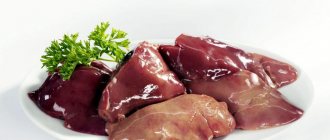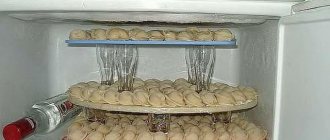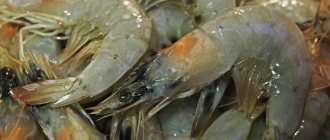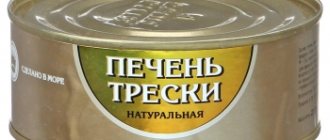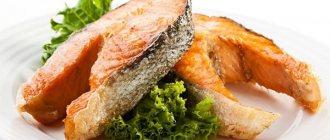The US Food and Drug Administration states that leftover prepared meals or processed foods should be refrigerated or frozen within 2 hours of preparation and, after a maximum of 4 days of storage in the refrigerator, not the freezer, eaten or discarded.
And here is what Roskachestvo : “You should not eat perishable ready-made meals (meat, poultry, eggs, and casseroles) that have been out of refrigeration for more than 2 hours at room temperature or 1 hour at air temperatures above 35 ° C.” It is clear that such time restrictions apply not only to homemade food, but also to dishes from ready-to-eat food delivery companies. This is a general recommendation based on bacterial growth rates and storage practices. Roskoshestvo also gives recommendations for those cases when it comes to a long feast: it is advisable to place containers with ice under plates with cold appetizers and you need to completely replace the eaten dish with a fresh one from the refrigerator, and not add a new portion to the leftovers.
Pea soup with meat broth, which will become even tastier on the second day of storage in the refrigerator
A little chemistry lesson
But, as you know, there are exceptions to every rule. And shelf life may depend on the qualities of the product itself, the technology of its preparation and chemical properties. Each prepared dish has its own level of acid-base balance (pH) and moisture content. Tomato sauce or lemon pie has a low pH (below 6), meaning it is highly acidic. And the higher it is, the more unfavorable the conditions for bacterial growth. Such dishes can be stored in the refrigerator for up to 5-7 days. And those with a value of 6 or higher, for example, from fish or eggs, are best eaten or thrown away within 3 days.
It's a similar story with food moisture. The less it is, such as in cookies or muffins with a high sugar content, the worse the conditions for the development of bacteria and mold. These dishes can be stored without refrigeration in an airtight container for a week. And, for example, boiled meat and vegetables with a high moisture content, even in the refrigerator, will be susceptible to bacterial growth. They should be eaten within a maximum of 3 days.
Now it’s clear that the most shelf-stable baked goods are those with lemon, for example, lemon pie. It is both sour and sugary, which means it will “survive” for a whole week in a closed container and at room temperature.
Lemon pie
Helpful tips for storing prepared food in the refrigerator
- An airtight container is a must for storing any prepared food, as oxygen stimulates the growth of bacteria. And to avoid condensation, simply place a sheet of paper towel under the lid and change it from time to time.
- Regularly monitor the temperature in the refrigerator: it should not exceed 4 °C.
- The temperature at the back of the refrigerator is lower than near the door, so think carefully about the placement of containers.
- Be sure to make notes on the container with the time and date of placement, especially if there are people in the family who like to snack individually.
- Do not put containers with hot or warm leftover food in the refrigerator, this increases the rate of spread of bacteria and harms the operation of the refrigerator.
- A small amount of lemon juice added to the dish will prolong its shelf life.
- If you want to preserve the product for a long time, use the freezer. Do this with broths , pouring them into ice cube trays or filling zip bags halfway with liquid.
- If a dish is stored longer than expected, do not freeze it, but throw it away without regret. Take care of yourself and your loved ones!
Store any prepared food in food containers
Fish and seafood
Do you need to store fish in the refrigerator? Then you need to first gut it and rinse it well with running water, freeing up space on a specially designated shelf in the refrigerator. After this, the fish should be dried with a paper towel. Then place in a glass or enamel container. Cover with cling film and place on the refrigerator shelf, towards the back. If the fish just needs to be frozen, then pre-cleaning is unnecessary.
The table shows the shelf life of fish and seafood.
| Product Name | Shelf life in the refrigerator | Storage Features |
| fresh fish | 12 hours | in an open bowl covered with cling film |
| chilled fish | 10 hours | in any container |
| seafood | 7 o'clock | in a plastic food container |
| seaweed | 72 hours | in original plastic packaging or in a container |
| salty fish | 24 hours | in a plastic bag |
| smoked fish | 72 hours | in a plastic bag |
| dried fish | 1-2 months | in parchment paper |
| canned fish | 3-6 months | in original metal tin can |
Shelf life in the refrigerator using specific examples
Boiled eggs, chicken or tuna salad
Boiled eggs and salads with boiled/smoked chicken or canned tuna can be stored in the refrigerator for up to 7 days at a temperature not exceeding 4 °C. And you don’t need to season the entire salad with mayonnaise before storing, but only the part that you put out of the container onto a plate to eat. Store the rest without dressing.
Pasta salad with canned tuna
Cooked meat and poultry
Boiled chicken, steak and pork tenderloin keep well in the refrigerator for 3-4 days. Store these dishes at room temperature for at least 2 hours, during which time they will definitely cool down. If you decide to put cooked meat (especially fried meat) in the freezer, think carefully: according to chefs, after defrosting it loses its taste and original texture.
Pork tenderloin with nut butter
Pizza
As with cooked meat and poultry, pizza can usually be stored in the refrigerator for 3-4 days. Just wrap the already cooled pieces tightly in baking paper to preserve the taste, or better yet, in cling film so that the pizza does not smell of the food surrounding it. Heat in a frying pan, covering with foil as a lid. In the oven, the pizza will become drier and may even burn around the edges.
Vegetable pizza with mozzarella
Soups
Whether you make a pot of minestrone , chicken noodles , or kharcho , there is almost always leftover soup and it tastes even better the next day. Eat soups for 3-4 days, of course, before putting them in the refrigerator, be sure to cool them.
Hearty vegetable minestrone with barley and meatballs
Japanese cuisine
Although most leftover prepared foods can last for 3-4 days, there are exceptions, such as sushi and rolls ! Do not store them for more than 1 day, but rather eat them right away - fish is a perishable product, especially since its freshness is always in question, since we do not live on the sea-ocean.
Philadelphia roll in caramel with red caviar
How to fry pistachios
Pistachios are delicious nuts that differ from other nuts in lower calorie content and have a fairly rich vitamin composition. These nuts have a tonic effect and help with chronic fatigue and depression. They are also called “funny nuts” because of the effect they have and the cracked, smile-shaped shell.
Iranian pistachios are considered the most delicious. They are sprinkled on ice cream, added to baked goods, cocktails, meat and fish dishes, and salads. In the East, pistachios are used to make baklava, Turkish delight and other national sweets.
Nowadays pistachios can be bought at any store, but since all nuts contain a large amount of oil and quickly become rancid, it is best to stock up on fresh pistachios, which can be dried or fried if desired. Fresh pistachios are soft and have a milky taste. We are more accustomed to eating them cooked. In addition, fresh nuts do not last long, and after drying in the sun they can be stored for almost a year. Few people know how to properly fry pistachios.
To properly fry pistachios, according to some recipes, you must first soak them in salt water. This is for those who like their nuts soaked through with salt. A simpler process sequence looks like this:
Raw pistachios must first be peeled and peeled, then boiled for five minutes. Then drain the pistachios in a colander and let them dry thoroughly.
Place the peeled, boiled and dried nuts on a baking sheet in an even layer. Preheat the oven to one hundred and eighty degrees and place a baking sheet with pistachios there. Fry for about five minutes, then sprinkle with spices and salt. You can do without spices altogether. You can eat pistachios after they have cooled completely, during which time they will have time to absorb salt.
Frying pistachios at home is easy; if you wish, you can do it not in the oven, but using a cast-iron frying pan. Pistachios, as already mentioned, can be pre-soaked and dried, or boiled. The prepared nuts are poured into a frying pan, greased with oil and fried until golden brown, with constant stirring, then seasoned with salt.
We recommend reading: How to Store Fresh Raspberry Leaves at Home in the Freezer
Frying pistachios in a frying pan is especially popular, as this method gives them a more pronounced taste. In addition, you can control the degree of “toasting”. If there is too much oil, place the nuts on a paper towel after frying. which will absorb excess fat.
Raw pistachios must first be peeled and peeled, then boiled for five minutes. Then drain the pistachios in a colander and let them dry thoroughly.
The cause of poisoning is not only food!
There are people who are said to have an “iron stomach” - they digest everything. But in fact, they just have a strong immune system: it plays a key role in preventing food poisoning. Eating plenty of fruits, nuts and vegetables and leading a healthy and active life, according to doctors, can strengthen the immune system .
But cleanliness is very important for the health of the stomach. Its absence is a common cause of poisoning. E. coli and other destructive microorganisms love warmth and moisture. They love cutting boards and sponges, dirty refrigerators and unwashed food containers. This means that their appearance may have nothing to do with a violation of the food shelf life. So change your sponges often, wash food containers thoroughly, and keep your refrigerator tidy. Have different cutting boards for meat, fish, vegetables and bread.
How to Dry Pistachios If They're Damp
For a long time I thought that pistachios were impossible to find raw. After all, they are sold everywhere fried and salted, and the most I found was unsalted fried. But then in my hometown of Irkutsk I found raw pistachios! True, their price is such that you can’t get much. More than 600 rubles/kg, I don’t remember the exact price. But their quality is excellent - fresh, germinates quickly, and delicious!
I imagined that raw pistachios would be very different from the roasted ones we are all used to, just as roasted and raw peanuts are very different. But they turned out to be very similar, also with a pronounced pistachio taste. Awesome thing! If it weren't for such a high price, I would eat raw pistachios every day.
They are sold in shells, slightly cracked. Externally, raw pistachios are very similar to fried ones; they are almost indistinguishable. Look at the photo to see what raw pistachios look like in shell, peeled, soaked and sprouted.
Some facts about pistachios:
— Pistachios (Pistácia) belong to the Sumakh family (Anacardiaceae).
— Pistachios are considered drupes.
— Distributed in the Mediterranean, Northeast Africa, Western, Central and Eastern Asia. Some types of pistachios are native to Central America.
— Pistachio trees can withstand temperatures not lower than -25 degrees. They are resistant to drought, love light, grow on gray soils, on mountain-steppe brown soils, on cliffs and slopes.
— The fruits of pistachio trees ripen between September and November.
— Pistachios are grown in the largest quantities in Iran and the USA, as well as in Turkey, Syria, China, Greece, Afghanistan, Tunisia and Italy. Pistachios also grow in the Caucasus and Crimea.
— In some varieties of pistachios, the shell itself cracks when ripe, but in others it does not, so this is done mechanically.
— Pistachios are called 'magic nuts' because they contain a lot of useful substances, and the Chinese call pistachios 'lucky nuts' because when they crack, they resemble a contented smile.
We recommend reading: Butter has darkened in the refrigerator
— It is believed that pistachios relieve fatigue and give vigor; they are also useful for high physical and mental stress. They also have a beneficial effect on the brain.
— Pistachios reduce susceptibility to heart disease, perfectly improve the functioning of the cardiovascular system and relieve heart palpitations.
— Pistachios improve liver function, help cure jaundice, relieve liver and stomach colic, treat anemia and ulcers, are very useful for diseases of the respiratory system, enhance sexual potency, improve sperm quality, increase the mobility and vitality of male germ cells.
— Pistachios are very rich in various vitamins and microelements. In particular, they contain a lot of vitamin B6, phosphorus, magnesium, copper, manganese, potassium, etc.
— Pistachios improve vision and reduce the risk of retinal dystrophy.
- Reduce the risk of cancer.
— Slow down the aging process of the body, promote cell growth and renewal.
— Pistachios also clear bile ducts from blockages.
— Composition of pistachios per 100 grams:
Fiber: 10.3 g
Calorie content: 557 kcal.
How to germinate pistachios:
You need to soak them overnight or for a day, right in the peel. After this, peel the pistachios and place them in damp gauze or a napkin (even toilet paper folded in several rows will do). You need to make sure it doesn't dry out and add a little water if necessary. The pistachios will sprout in a day or two, depending on their freshness.
How to germinate pistachios:
